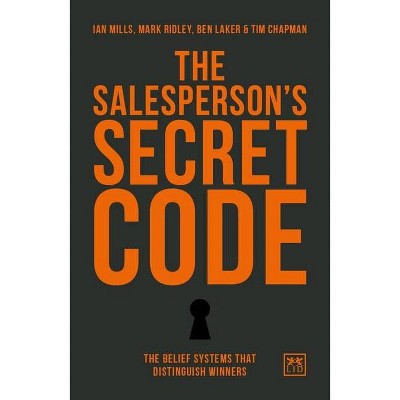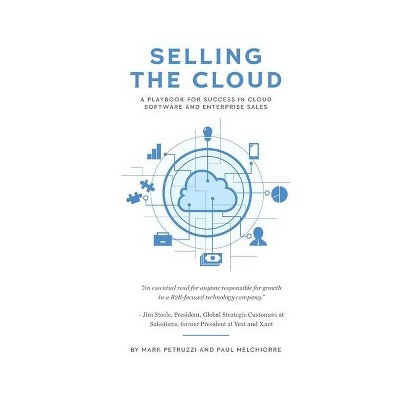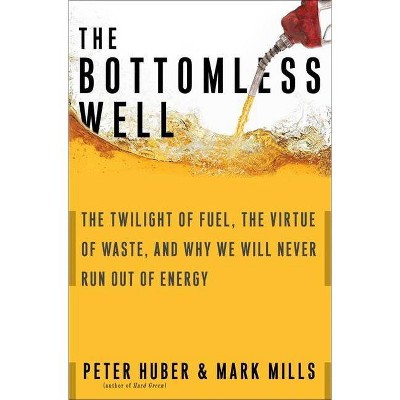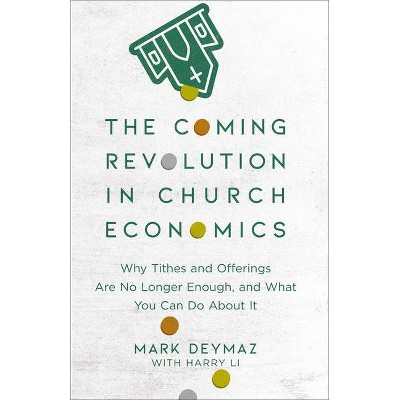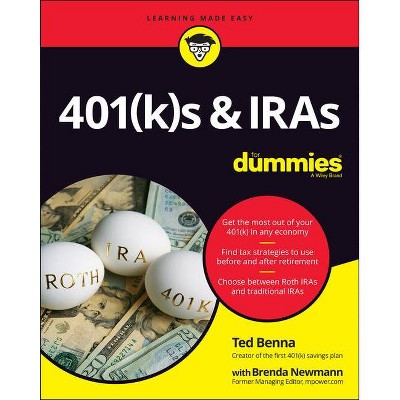The Cloud Revolution - by Mark P Mills (Hardcover)

Similar Products
Products of same category from the store
AllProduct info
<p/><br></br><p><b> About the Book </b></p></br></br>"When it comes to predicting how technology changes our near future, there are two camps. One says we live at a time of a "new normal" where we've netted all the low-hanging fruit and ordering a ride or food on a smartphone is as good as it's going to get. The other camp sees lots of changes but mainly in destroying jobs and traditional businesses. They're both wrong, predicts Mark P. Mills, whose earlier book "The Bottomless Well" debunked the bleak consensus view that the world had reached "peak oil" production in the early 2000s. History will record the 2020s as one of the episodic pivots in human progress where technology-driven prosperity goes into high gear. And it doesn't come from any single 'big' invention, but from the convergence of radical advances in technologies in three domains: the "Cloud," history's biggest and newest infrastructure, built from next-generation microprocessors and democratizing artificial intelligence; new kinds of machines used for making and moving everything; and the emergence of unprecedented and novel materials from which everything is built. We've seen this pattern before. The structure of the technological revolution that drove the last long-run expansion can be traced to the 1920s. It too came from the same kind of convergence: a new information infrastructure (telephony), new machines (cars and power plants), and new materials (plastics and pharmaceuticals). It's true that we've wrung all the magic out of the last boom. But the next one starts now. The U.S. is again at the epicenter of these innovations, one that promise to upend the status quo in manufacturing, transportation, healthcare, education, energy and entertainment"--<p/><br></br><p><b> Book Synopsis </b></p></br></br><p>The conventional wisdom on how technology will change the future is wrong. Mark Mills lays out a radically different and optimistic vision for what's really coming. <p/>The mainstream forecasts fall into three camps. One considers today as the "new normal," where ordering a ride or food on a smartphone or trading in bitcoins is as good as it's going to get. Another foresees a dystopian era of widespread, digitally driven job- and business-destruction. A third believes that the only technological revolution that matters will be found with renewable energy and electric cars. <p/> But according to Mills, a convergence of technologies will instead drive an economic boom over the coming decade, one that historians will characterize as the "Roaring 2020s." It will come not from any single big invention, but from the confluence of radical advances in three primary technology domains: microprocessors, materials, and machines. Microprocessors are increasingly embedded in everything. Materials, from which everything is built, are emerging with novel, almost magical capabilities. And machines, which make and move all manner of stuff, are undergoing a complementary transformation. Accelerating and enabling all of this is the Cloud, history's biggest infrastructure, which is itself based on the building blocks of next-generation microprocessors and artificial intelligence. <p/>We've seen this pattern before. The technological revolution that drove the great economic expansion of the twentieth century can be traced to a similar confluence, one that was first visible in the 1920s: a new information infrastructure (telephony), new machines (cars and power plants), and new materials (plastics and pharmaceuticals). Single inventions don't drive great, long-cycle booms. It always takes convergent revolutions in technology's three core spheres--information, materials, and machines. Over history, that's only happened a few times. <p/>We have wrung much magic from the technologies that fueled the last long boom. But the great convergence now underway will ignite the 2020s. And this time, unlike any previous historical epoch, we have the Cloud amplifying everything. The next long boom starts now.</p><p/><br></br><p><b> Review Quotes </b></p></br></br><br><p>"Entertaining and educating while linking history, technology and unusual savvy, Mark Mills's The Cloud Revolution shows an unprecedented upcoming convergence of technological forces from whose acquaintance you can't help but be a much better investor." --Ken Fisher, founder and executive chairman of Fisher Investments, multi-national columnist, and bestselling author <p/>"Makes the exciting--and convincing--case that we're on the cusp of a fantastic new era of technological breakthroughs that will vastly enrich our lives. What a timely--and much needed--antidote to the debilitating pessimism that now reigns." --Steve Forbes, chairman and editor-in-chief of Forbes Media <p/>"A compelling case for optimism: An economic boom in the immediate future driven by the convergence of three evolving technologies aided by the Cloud. Tons of verifiable data support the case... An antidote to the doomsday scenarios that seem to tint everything today." --Julio M. Ottino, dean of the Robert R. McCormick School of Engineering and Applied Sciences, Northwestern University <p/>"This is a book about how the future will work. The '20s' will roar because of the new economy made possible by the Cloud. 'Data is the new oil' not because it replaces oil but because of the wide range of new industries and innovation it will spawn. This is a book that one will learn much from--and be amazed by." --Daniel Yergin, vice chairman of IHS Markit, and Pulitzer Prize-winning author of <i>The Prize and The New Map: Energy, Climate, and the Clash of Nations</i></p><br><p/><br></br><p><b> About the Author </b></p></br></br><p>Mark P. Mills, a physicist, is a Manhattan Institute senior fellow, a faculty fellow at Northwestern University, and a partner in Montrose Lane, an energy-tech venture fund. He is author of <i>Digital Cathedrals</i> (2020) and <i>Work in the Age of Robots</i> (2018), and he is the co-author of <i>The Bottomless Well</i> (2006). He served as chairman and CTO of ICx Technologies, helping take it public in 2007. Earlier, Mills co-authored a successful tech investment newsletter, the Huber-Mills Digital Power Report, and prior to that he served in the Reagan White House Science Office and worked for a number of firms in the commercial nuclear industry. He began his career as an experimental physicist and development engineer in microprocessors and fiber optics at the dawn of the semiconductor revolution, earning several patents while working at Bell Northern Research (Canada's Bell Labs) and at RCA's microprocessor factory in New Jersey.</p>
Price History
Price Archive shows prices from various stores, lets you see history and find the cheapest. There is no actual sale on the website. For all support, inquiry and suggestion messagescommunication@pricearchive.us

